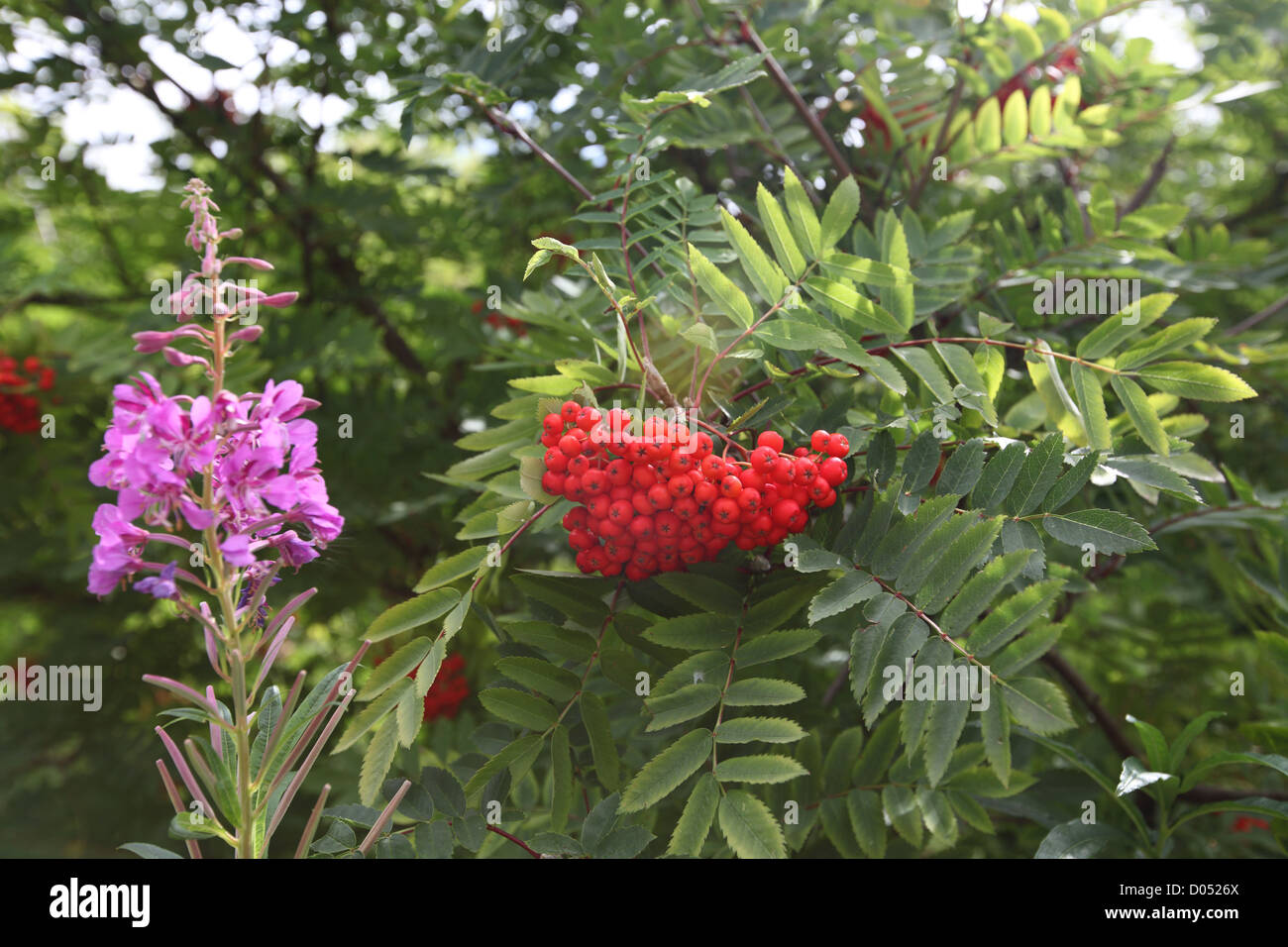red berries in late summer seen on the mountain ash or Rowan tree (sorbus aucuparia) growing adjacent to a pink willow herb

Image details
Contributor:
graham bate / Alamy Stock PhotoImage ID:
D0526XFile size:
60.2 MB (1.9 MB Compressed download)Releases:
Model - no | Property - noDo I need a release?Dimensions:
5616 x 3744 px | 47.5 x 31.7 cm | 18.7 x 12.5 inches | 300dpiDate taken:
22 July 2011Location:
Goole, east YorkshireMore information:
red berries in late summer seen on the mountain ash or Rowan tree (sorbus aucuparia) growing adjacent to a pink willow herb The best-known species is the European Rowan Sorbus aucuparia, is a small tree typically 4–12 m tall growing in a variety of habitats throughout northern Europe and in mountains in southern Europe and southwest Asia. Its berries are a favourite food for many birds and are a traditional wild-collected food in Britain and Scandinavia. It is one of the hardiest European trees, occurring to 71° north in Vardø in Arctic Norway, and has also become widely naturalised in northern North America. Willowherbs are typically very quick to carpet large swathes of ground and may form key or even dominant species of local ecosystem. In and around the United Kingdom for example, Rosebay Willowherb (E. angustifolium) is widely found in mesotrophic grassland dominated by False Oat-grass (Arrhenatherum elatius), Cock's-foot (Dactylis glomerata) and Red Festuce (Festuca rubra), while Great Willowherb (Epilobium hirsutum) is found in mesotrophic grassland with abundant False Oat-grass, Cock's-foot and Stinging Nettle (Urtica dioica). These two willowherb species are also seen to dominate open habitat early in ecological succession, to the virtual exclusion of other plant life. Broad-leaved Willowherb (Epilobium montanum) is found characteristically though not abundantly in the mesotrophic grasslands rich in False Oat-grass, Meadowsweet (Filipendula ulmaria), and sometimes the otherwise rare Greek Valerian (Polemonium caeruleum), which are peculiar to the Pennines. Most willowherbs will not tolerate shade trees well and thus are limited to comparatively freshly disturbed patches, yielding to other plants as the years pass by.